A Fair Chance: Simple steps to strengthen and diversify the teacher workforce
Criteria for great courses – and examples of ones that miss the mark
Courses in the topics identified above need to meet four characteristics: attainability, breadth, relevance, and focus on content. Courses that do not exhibit these characteristics can still offer value for teacher candidates, developing their interest in a topic or giving pedagogical techniques. However, teacher candidates must start from a strong foundation in a topic, and so preparation programs must first make sure that candidates' core knowledge is in place. Below are explanations of the four key criteria for great content courses and examples of real courses that miss the mark.
ATTAINABILITY: the scope of the course could feasibly be taught in a semester, rather than being too broad to cover the topics in sufficient detail in the time allowed.
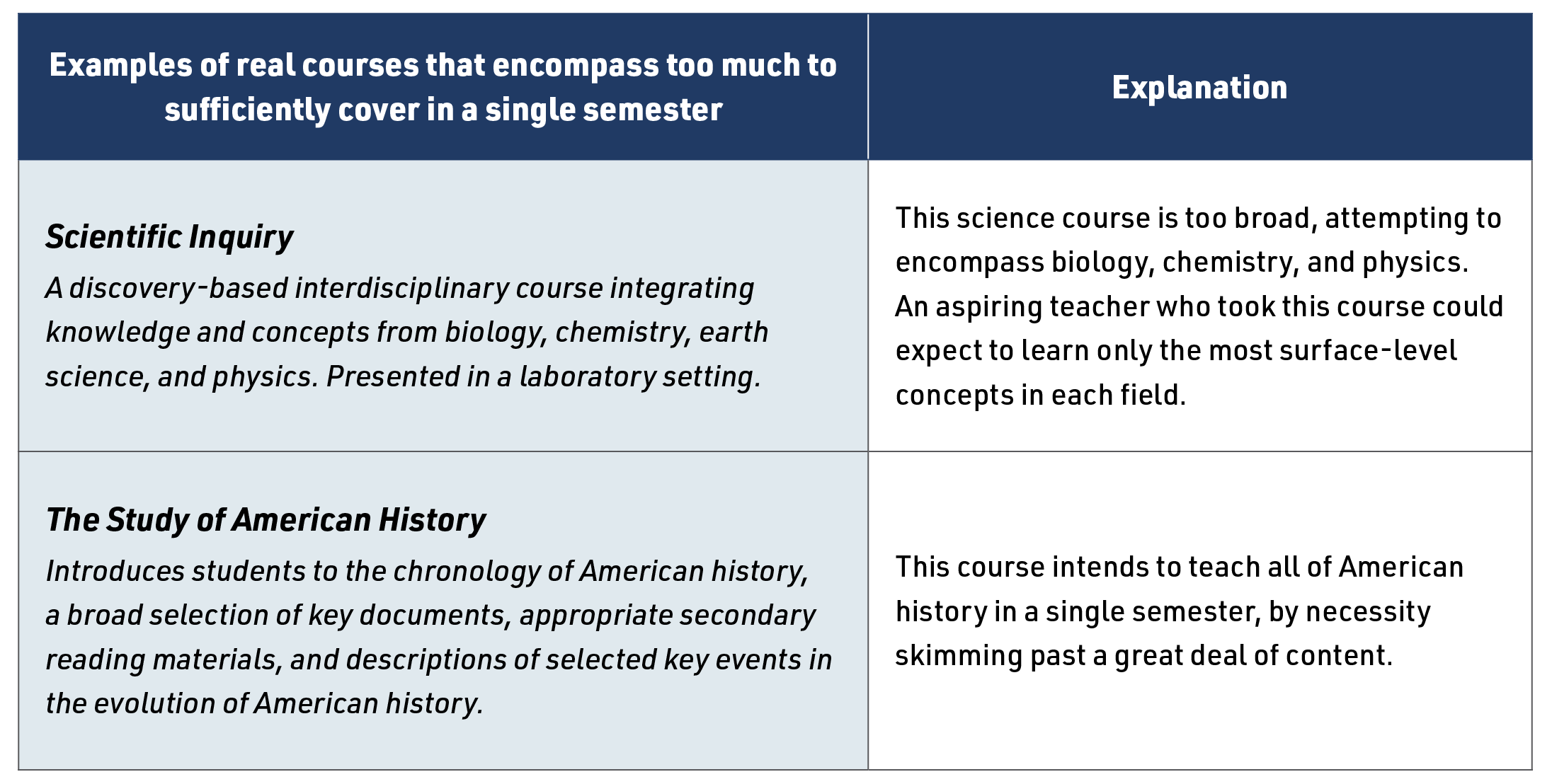
BREADTH: The course (or a combination of required courses) should be broad enough to give the candidate a foundation in the full range of content a candidate would need to know. Many college courses address a narrow and specific topic on the assumption that high schools cover the broader material. However, for teacher candidates who may lack basic understanding of a subject, specialized courses would need to be preceded by more introductory exposure that build the foundational knowledge teachers need. This problem is most common in science courses, for which teacher candidates could often choose from a menu of options to satisfy core requirements, many of which focus narrowly on a very specific facet of science.
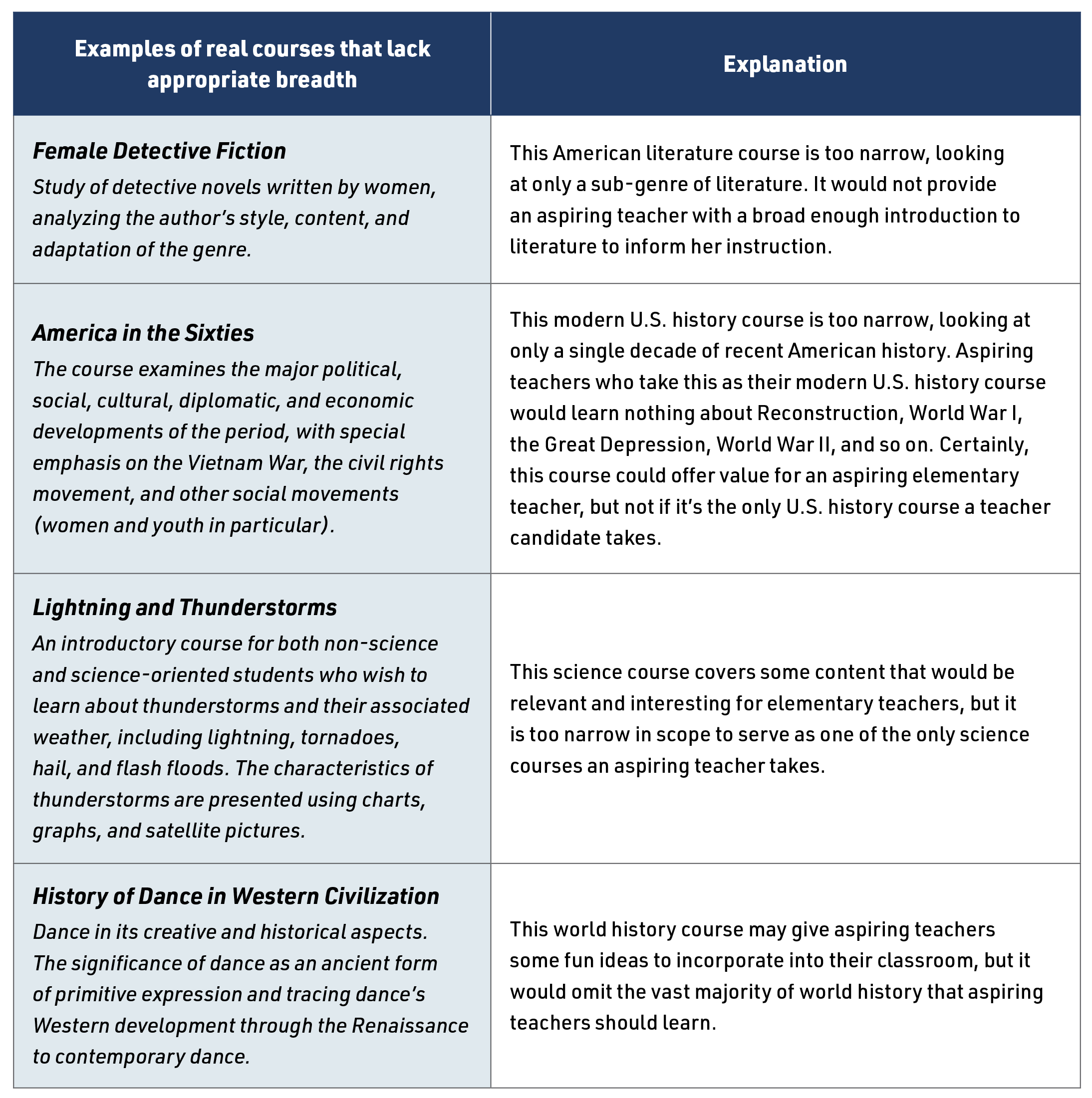
RELEVANCE: The course should cover the topics most likely to be useful for the elementary classroom. While almost any topic might prove useful at some point to at least some of the students taking a course, the aim on the part of the prep programs should be to focus on the topics most likely to be useful to elementary teachers.
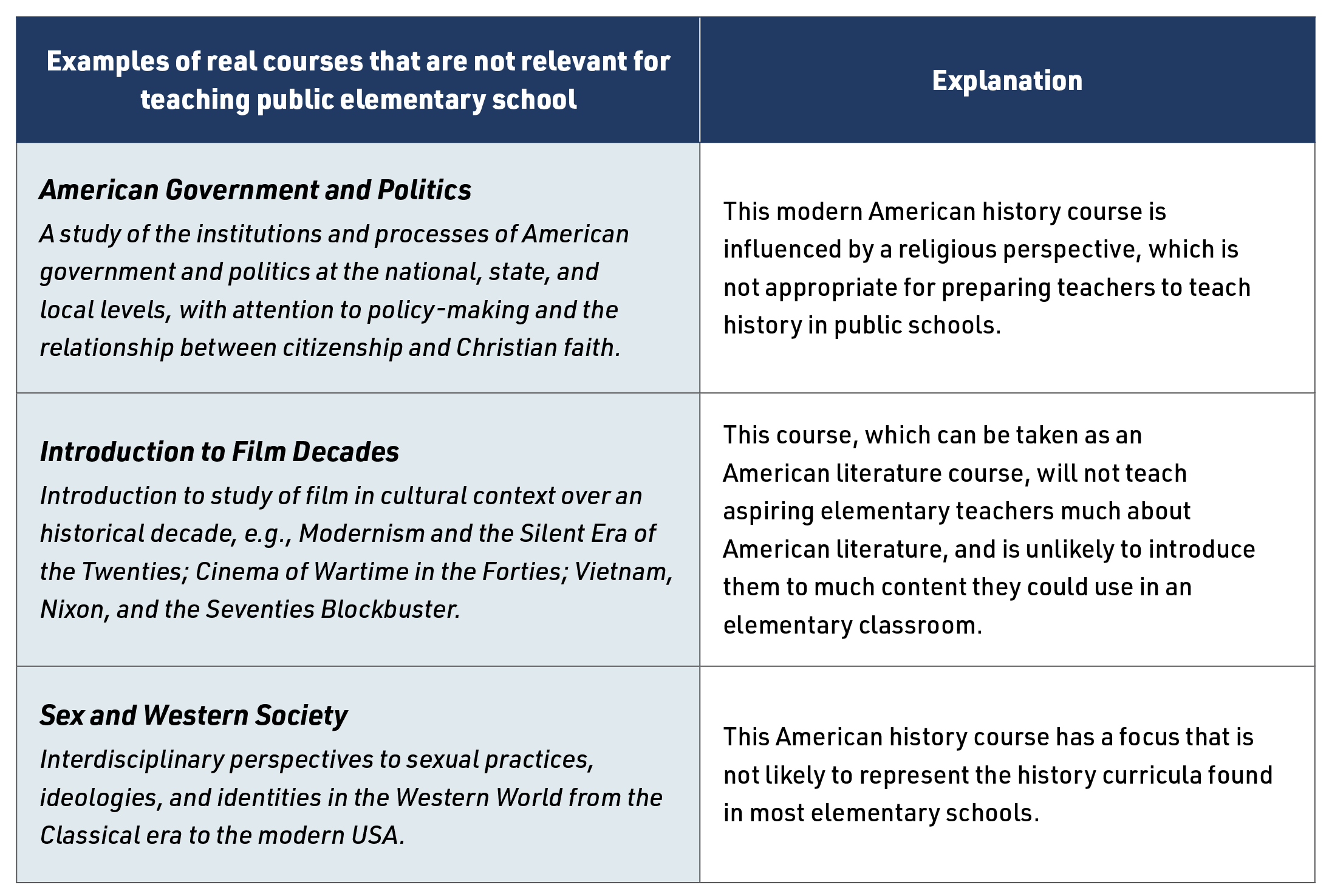
FOCUS ON CONTENT, NOT PEDAGOGY: The course should teach core content for a general college audience, rather than being tailored to aspiring teachers (which would reduce the time and attention given to key concepts and skills). The exceptions to this are elementary math and children's literature – which may only be of interest to a teacher audience, although they should still address content rather than pedagogy. While teacher candidates should take methods and pedagogy courses geared around content (e.g., an elementary mathematics methods course), this should not replace (or precede) courses focused entirely on content.
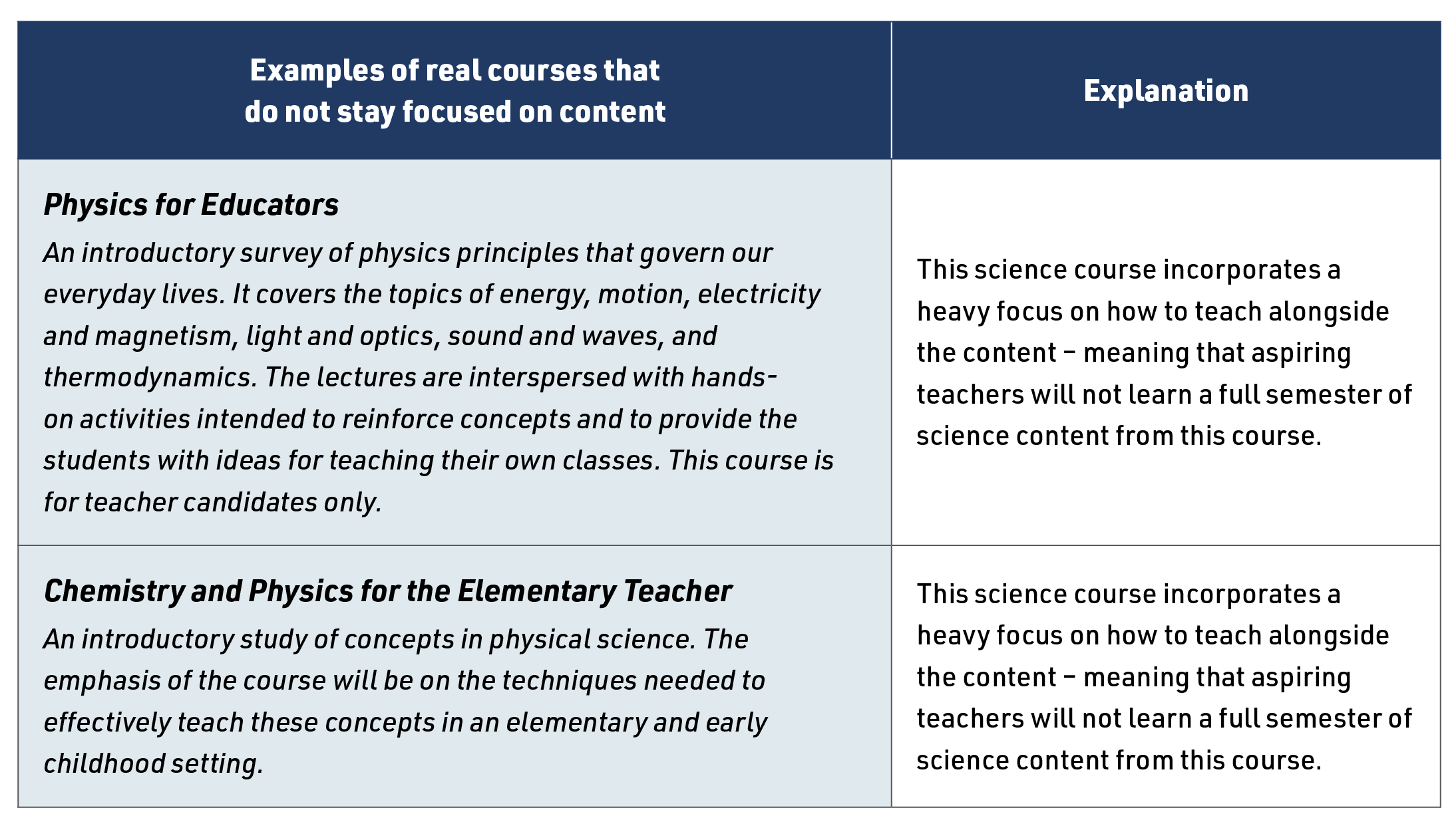
In most cases, teacher prep programs can establish parameters that will guide teacher candidates to select courses that both fulfill the institutions' general education requirements and best prepare them for an elementary teaching career. If institutions review available coursework in light of its attainability, breadth, relevance, and focus on content, they can identify coursework that is better aligned with the needs of an aspiring elementary teacher. A sure foundation in elementary content will likely lead to better outcomes for all: better licensure pass rates, better retention in the profession and, finally, better content delivery and mastery for elementary students.
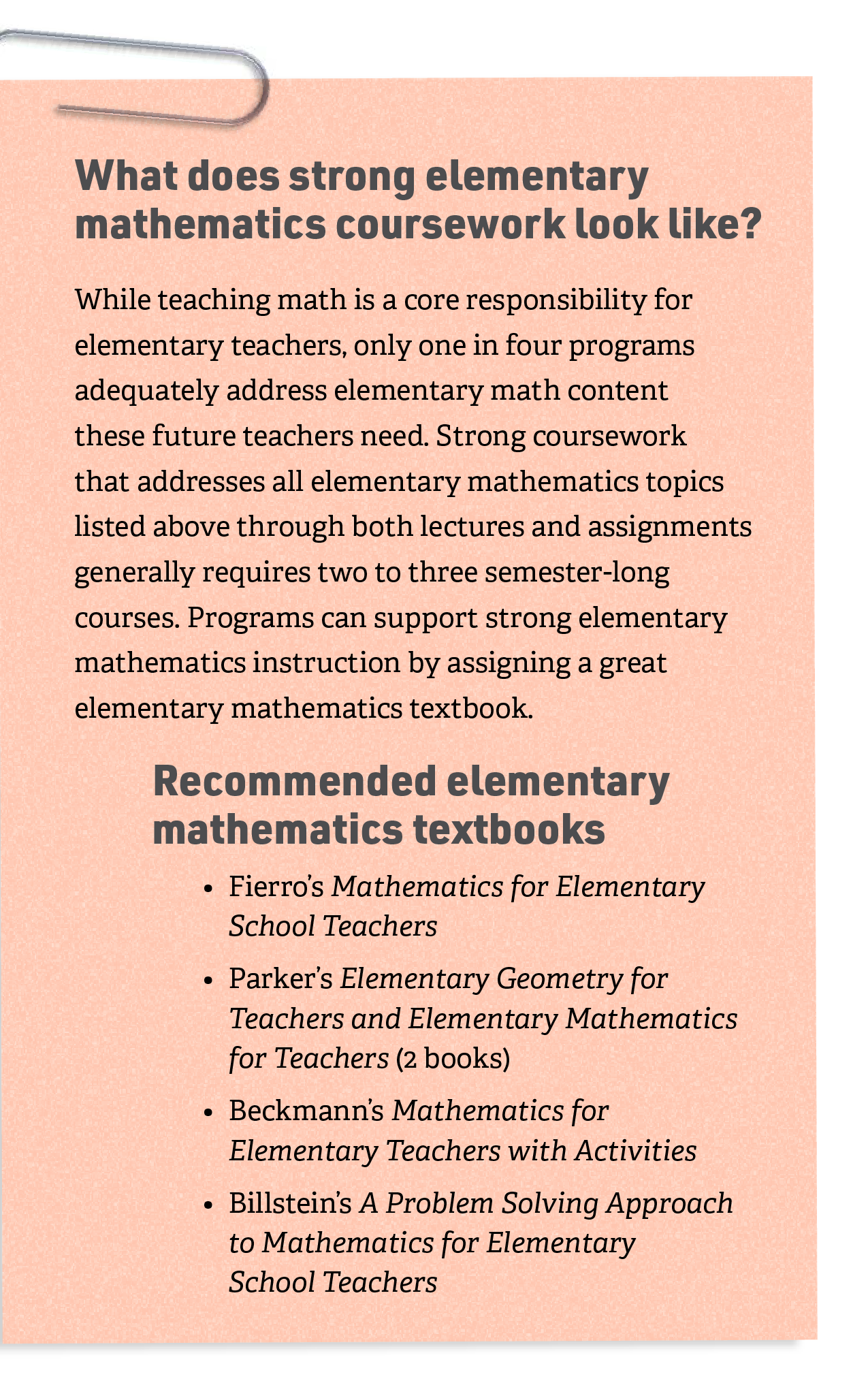
To guide the process of identifying existing courses or creating new ones, take a look at the content included in your state's teacher licensure tests, identified in the section Guidance for topics in states' tests.
For examples of course syllabi that address core content, see these sample syllabi provided by the Core Knowledge Foundation.
For examples of undergraduate teacher preparation programs that require aligned content in most areas, see Programs with strong content requirements.
ATTAINABILITY: the scope of the course could feasibly be taught in a semester, rather than being too broad to cover the topics in sufficient detail in the time allowed.

BREADTH: The course (or a combination of required courses) should be broad enough to give the candidate a foundation in the full range of content a candidate would need to know. Many college courses address a narrow and specific topic on the assumption that high schools cover the broader material. However, for teacher candidates who may lack basic understanding of a subject, specialized courses would need to be preceded by more introductory exposure that build the foundational knowledge teachers need. This problem is most common in science courses, for which teacher candidates could often choose from a menu of options to satisfy core requirements, many of which focus narrowly on a very specific facet of science.

RELEVANCE: The course should cover the topics most likely to be useful for the elementary classroom. While almost any topic might prove useful at some point to at least some of the students taking a course, the aim on the part of the prep programs should be to focus on the topics most likely to be useful to elementary teachers.

FOCUS ON CONTENT, NOT PEDAGOGY: The course should teach core content for a general college audience, rather than being tailored to aspiring teachers (which would reduce the time and attention given to key concepts and skills). The exceptions to this are elementary math and children's literature – which may only be of interest to a teacher audience, although they should still address content rather than pedagogy. While teacher candidates should take methods and pedagogy courses geared around content (e.g., an elementary mathematics methods course), this should not replace (or precede) courses focused entirely on content.

In most cases, teacher prep programs can establish parameters that will guide teacher candidates to select courses that both fulfill the institutions' general education requirements and best prepare them for an elementary teaching career. If institutions review available coursework in light of its attainability, breadth, relevance, and focus on content, they can identify coursework that is better aligned with the needs of an aspiring elementary teacher. A sure foundation in elementary content will likely lead to better outcomes for all: better licensure pass rates, better retention in the profession and, finally, better content delivery and mastery for elementary students.

To guide the process of identifying existing courses or creating new ones, take a look at the content included in your state's teacher licensure tests, identified in the section Guidance for topics in states' tests.
For examples of course syllabi that address core content, see these sample syllabi provided by the Core Knowledge Foundation.
For examples of undergraduate teacher preparation programs that require aligned content in most areas, see Programs with strong content requirements.
